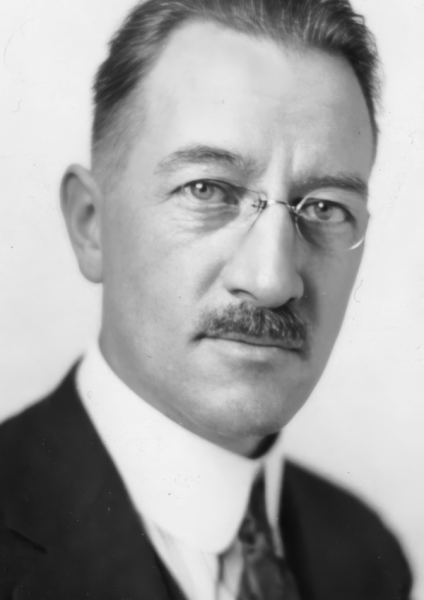
In a manuscript prepared for The Youth’s Instructor in 1910, Arthur Whitefield Spalding asserted that Owen Crosier and Franklin Hahn had accompanied Edson across the field “to comfort some of the brethren.” As Spalding dramatized the scene, suddenly Edson “felt as it were a hand upon him, stopping him where he was,” and “a glory shone around him, and looking as in a vision he saw that Jesus, our High Priest, had entered that day into the most holy place of the sanctuary in heaven, and there he would stay until he had finished the work of cleansing it.” Furthermore, Edson heard “a voice” declaring, “The sanctuary to be cleansed is in heaven.” Finally, he allegedly told Crosier, “We must prophesy again before many people and nations and tongues.” Although the article’s title claimed that the information conveyed had been “adapted from the manuscript of Hiram Edson,” Spalding obviously added several elements that Edson’s account omitted. His assertion that Edson foresaw a worldwide mission work in 1844 also contradicts the shut-door views that he and most other Adventists espoused at the time.1
It is possible that Spalding’s account was based on information provided him by Edson’s daughter, Viah Cross. Although she did not publish her view of her father’s cornfield experience until 1920, her words are so similar to Spalding’s a decade earlier as to suggest a direct connection. After declaring that Edson and “others” were crossing the field, she wrote: “Suddenly father saw a bright light shining around him and heard these words, as if spoken by an audible voice: ‘The temple of God was opened in heaven, and there was seen in his temple the ark of his testimony.’”2
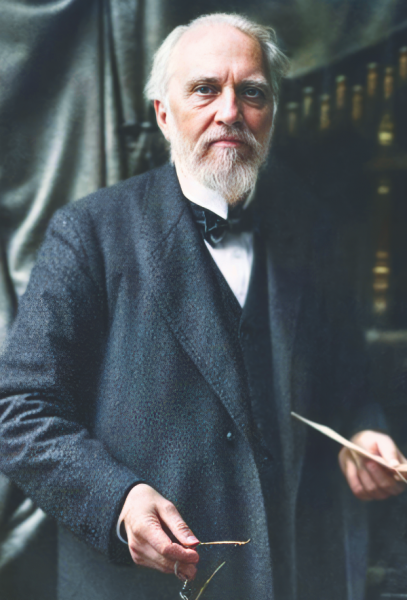
For the next century, many other writers followed the lead of Spalding and Cross in declaring that Edson had actually seen a vision. In 1935, F.M. Bartle, who had once copied Edson’s manuscript in his own handwriting, informed retired General Conference President William Spicer that “Elder Hiram Edson had visions before Sr. White did”—in fact, he said, Edson’s October 23 vision had come two months prior to White’s first vision in December 1844.3
In 1947, Spalding wrote that “looking up, [Edson] saw, as in a vision, the sanctuary in heaven.”4 Two years later in a letter to Froom, he referred to Edson’s experience as “the revelation” and “the vision.”5 When Spalding’s Captains of the Host was published in 1949, Crosier had become Edson’s only visible cornfield companion, although the author asserted that on that morning of October 23, Christ walked “with these two disciples on their Port Gibson way.”6 A year later, possibly mirroring Cross’s words, Spalding described a hand stopping Edson in his tracks, a vision of the High Priest entering the Most Holy Place, and a voice saying, “The sanctuary to be cleansed is in heaven.”7
Le Roy E. Froom obviously agreed with Spalding, asserting in 1948 that Edson had “a veritable vision from heaven.”8 When the General Conference Department of Education issued the textbook The Story of Our Church in 1956, thousands of Adventist youth around the world learned that Edson had received “his vision” in a cornfield.9 Those who purchased Jerome Clark’s three-volume set 1844 received the same message.10
By the 1970s and 1980s, this visionary view had become so prevalent that even non-Adventist scholars whose works were published by secular presses adopted it. In The Rise of Adventism (1974), Edwin Gaustad suggested that Edson had received “a new vision of the atypical sanctuary” highlighting “a new phase of Christ’s ministry in heaven that placed earth under judgment.”11 Although highly critical of Ellen White’s visions in his book Prophetess of Health (1976), Ronald Numbers described Edson’s experience as “a vision of heaven.”12 So did Oxford University historian Malcolm Bull and London journalist Keith Lockhart in their pathbreaking volume Seeking a Sanctuary (1989).13
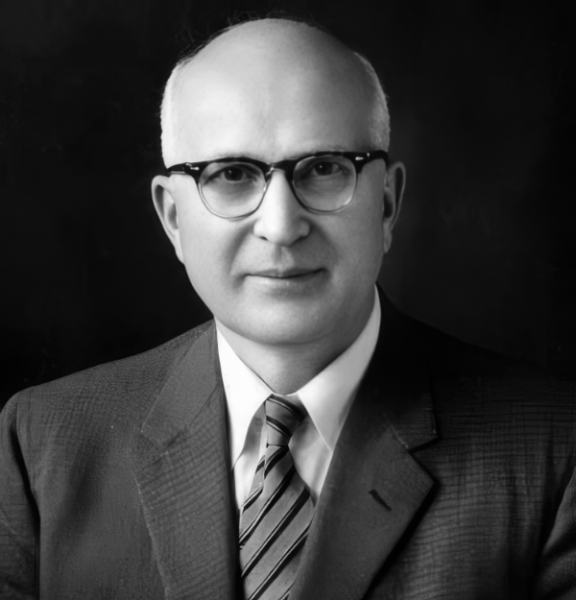
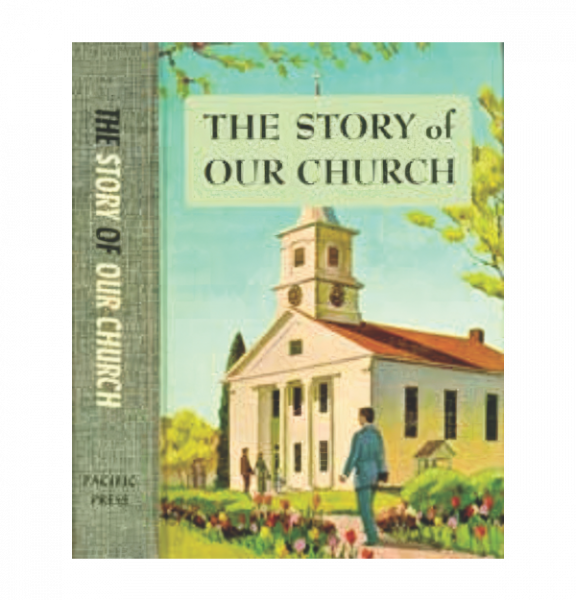
Meanwhile, some Adventist writers returned to the earlier, more dramatic renditions of Edson’s cornfield experience as shared by Cross and Spalding. Writing about the Adventist pioneers to inspire junior readers in 1979, James Joiner related that “a hand seemed to fall on [Edson’s] broad shoulder…and heaven appeared to open above him. He seemed to see Jesus Christ…as the great High Priest.… Then, as if struck by lightning, the farmer understood.”14 Two years later, the 1981 edition of In the Footsteps of the Pioneers used the word “revelation” rather than “vision.”15 In 1993, George Knight placed the word “vision” in quotation marks as though recognizing that, while this was the traditional Adventist view, it might not have matched the reality of Edson’s experience.16 Seven years later, however, Knight emphasized that while Edson had been one of the “minor actors in the Advent drama” compared with Miller, Litch, Fitch, Himes, and other leaders prior to October 22, what happened to him on October 23 gave him more prominence in the eyes of Sabbath-keeping Adventists.17
At least one of the church’s official periodicals published abroad employed the words “vision—scene of wonderment” in connection with Edson’s experience.18 So did writers in a few unofficial publications and even critical secular sources. For example, Glen Greenwalt, writing in the journal Spectrum in 1994, asserted: “I believe that Edson’s experience was truly visionary. For Edson saw what many prophets have seen in their hour of deepest trial—namely, a vision that Jesus had not abandoned them, but was even then working on their behalf in the courts of heaven.” Comparing Edson’s vision with those of Daniel, Stephen, Paul, and John, Greenwalt concluded that what happened in 1844 resembled God’s Word in every age as He seeks ways to dwell with His people.19 Likewise, Laura Vance, in her highly critical book Seventh-day Adventism in Crisis (1999), expressed a belief that Edson “saw in vision” the heavenly sanctuary to be cleansed, and that from this vision “contemporary Adventist eschatology has grown.”20
References to Edson having a vision or a divine revelation have increased in the 21st century, especially in Adventist publications aimed at young people and new Adventists.

References to Edson having a vision or a divine revelation have increased in the 21st century, especially in Adventist publications aimed at young people and new Adventists. For example, in 2001, the Youth Ministry Accent stated that Edson had received “a sudden revelation,” which turned the Adventists’ disappointment into joy when they discovered “a God of Justice and Mercy” who loved them and kept His promises to them.21 Taking a page from Cross and Spalding, Norma Collins, in a storybook for children, informed them that Edson “felt as if a hand were laid on his shoulder, stopping him in his tracks.… He saw what seemed to be a vision” of Jesus as High Priest, entering the Most Holy Place in the heavenly sanctuary to begin His work of judgment.22Recent audiovisual media also emphasize the idea of Edson having a vision. In their 2006 CD, “Hiram Edson, God’s Man,” William Fagal and Lewis and Richard Walton refer to his “vision.”23 The non-Adventist actor hired to play the role of Edson in the 2012 DVD “Meet Hiram Edson” also followed a script that stated, “I saw into heaven” as in a vision.24 Likewise, in his 2014 biography of John Harvey Kellogg, the non-Adventist historian Brian Wilson referred to Edson as a “visionary” and to his “visionary experience” in the cornfield.25 Don Barton, in an article published for Spectrum calling the investigative judgment teaching “Adventism’s life raft,” also stated that Edson had received “a vision in a cornfield.”26
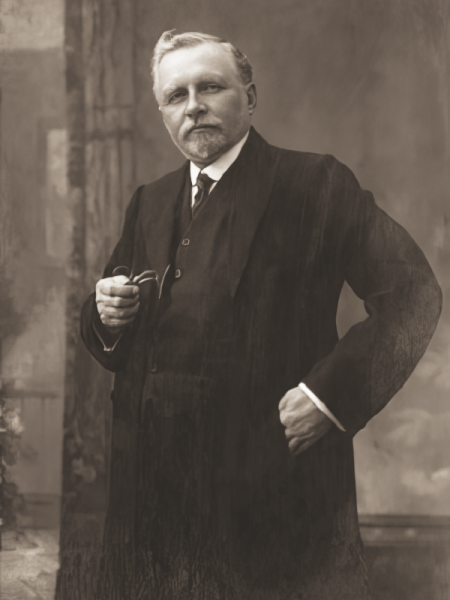
Edson received a flash of light
Several writers, however, sought alternate explanations for Edson’s cornfield experience. Most of these had something to do either with visible light or flashes of insight. As early as 1941, retired General Conference President William Spicer referred to “this light that came into Hiram Edson’s soul.… The light was like a message from heaven to his heart and mind.”27 Writing three decades later in Movement of Destiny (1971), Froom agreed, calling Edson’s experience “a flash of divine light.”28 Somewhat more dramatically, New York Conference pastor Henry Uhl in 1974 asserted that Edson had been “struck by a flash of truth like a lightning bolt with the sanctuary doctrine.”29 More restrained in his rhetoric, Merlin Burt, in his travel guidebook Adventist Pioneer Places (2011), wrote that Hiram had received “an experience of enlightenment,” “a particularly direct flash of insight,” and “an insight that encouraged his faith.”30 Exercising more creative license, Rachel Cabose told Guide readers in 2018: “Suddenly a bright light shone around Hiram. He seemed to be looking right into heaven!” Then he “heard a voice quote Revelation 11:19 [about the open door to the Most Holy Place and the ark being revealed].”31
There were other writers, however, who were reluctant to describe Edson’s experience either as a vision or as a flash of visible light. Most of them believed he received an impression, while a few were convinced that nothing supernatural happened in the cornfield. Next month, Part 4 will discuss these two groups and conclude this series by sharing a little-known word Edson would probably have used to describe his experience.
_____________________________
Brian E. Strayer retired after 41 years of teaching and, in addition to writing, is a frequent speaker at camp meetings, weeks of prayer, conferences, and churches.
1 A.W. Spalding, «Light on the Sanctuary,» The Youth’s Instructor, March 8, 1910, pp. 4-6.
2 Viah O. Cross, «Recollections of the Message,» Review, April 1, 1920, pp. 22-23.
3 F.M. Bartle to W.A. Spicer, Sept. 4, 1935, in James R. Nix, «The Life and Work of Hiram Edson» (term paper for Church History 600—Problems in Church History, Seventh-day Adventist Theological Seminary, Andrews University, 1971), Appendix H, pp. 201-203.
4 A.W. Spalding, Footprints of the Pioneers (Washington, D.C.: Review and Herald Pub. Assn., 1947), p. 75.
5 A.W. Spalding to L.E. Froom, Aug. 25, 1949, Spalding Correspondence, Coll. 10, Box 2, Fld. 2, CAR, JWL, AU.
6 A.W. Spalding, Captains of the Host (Washington, DC: Review and Herald Pub. Assn., 1949), pp. 94, 97.
7 A.W. Spalding, «A Western Ally,» Review, Jan. 19, 1950, p. 11. It is probable that Spalding had Viah Cross’s earlier manuscript about her father’s experience at hand when he wrote his article, and this might explain their similarity in wording.
8 Le Roy E. Froom, «How the Full Light on the Sanctuary Came to Us,» Review, Sept. 9, 1948, p. 8.
9 General Conference Department of Education, The Story of Our Church (Mountain View, CA: Pacific Press Pub. Assn., 1956), p. 177.
10 Jerome Clark, 1844, 3 vols. (Nashville, TN: Southern Pub. Assn., 1968), vol. 1, p. 67.
11 Edwin S. Gaustad, ed., The Rise of Adventism (New York: Harper and Row, 1974), p. 178.
12 Ronald L. Numbers, Prophetess of Health (New York: Harper and Row, 1976), p. 13.
13 Malcolm Bull and Keith Lockhart, Seeking a Sanctuary (New York: Harper and Row, 1989), p. 75.
14 James Joiner, «These Were the Courageous: Hiram Edson,» Guide, Oct. 24, 1979, p. 20.
15 In the Footsteps of the Pioneers (Washington, DC: Ellen G. White Estate, 1981), p. 21.
16 George Knight, Anticipating the Advent (Boise, ID: Pacific Press Pub. Assn., 1993), p. 22.
17 George Knight, A Search for Identity (Hagerstown, MD: Review and Herald Pub. Assn., 2000), pp. 62-64.
18 «Hiram Edson,» Southern Asia Tidings, Oct. 1994, p. 11.
19 Glen Greenwalt, «The Sanctuary: God in Our Midst,» Spectrum 24, no. 2 (Oct. 1994), pp. 42-49.
20 Laura Vance, Seventh-day Adventism in Crisis (Urbana and Chicago: University of Illinois Press, 1999), pp. 26-27.
21 «Inspired by Our Theology,» Youth Ministry Accent, April-June 2001, pp. 43-44.
22 Norma Collins, Heartwarming Stories of Adventist Pioneers (Hagerstown, MD: Review and Herald Pub. Assn., 2005), Book 1, p. 35.
23 William Fagal, Lewis Walton, and Richard Walton, «What Hath God Wrought? Hiram Edson, God’s Man» (Harrisburg, PA: American Cassette Ministries, 2006).
24 «Meet Hiram Edson» DVD (Silver Spring, MD: Adventist Heritage Ministry, 2012).
25 Brian C. Wilson, Dr. John Harvey Kellogg and the Religion of Biologic Living (Bloomington, IN: Indiana University Press, 2014), pp. 7, 22.
26 Don Barton, «The Investigative Judgment: Adventism’s Life Raft,» Spectrum 41, no. 3 (Summer 2013), p. 17.
27 William A. Spicer, Pioneer Days of the Advent Movement (Washington, DC: Review and Herald Pub. Assn., 1941), p. 221.
28 Le Roy E. Froom, Movement of Destiny (Washington, DC: Review and Herald Pub. Assn., 1971), p. 78 (see footnote).
29 Henry Uhl, «Church and State—a Dual Celebration,» Atlantic Union Gleaner, Aug. 27, 1974, p. 3.
30 Merlin D. Burt, Adventist Pioneer Places: New York & New England (Hagerstown, MD: Review and Herald Pub. Assn., 2011), pp. 130, 133.
31 Rachel Whitaker Cabose, «Light in a Cornfield,» Guide, Oct. 13, 2018, p. 18.
Edson Recibió una visión - 3ª PARTE
Por Brian E. Strayer
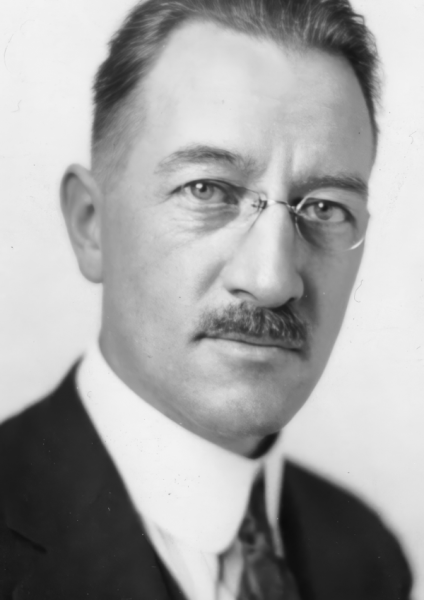
En un manuscrito preparado para The Youth’s Instructor en 1910, Arthur Whitefield Spalding afirmó que Owen Crosier y Franklin Hahn habían acompañado a Edson a través del campo «para consolar a algunos de los hermanos». Conforme Spalding dramatizó la escena, de repente Edson «sintió como si una mano lo tomase, deteniéndolo donde estaba», y «una gloria brilló a su alrededor, y mirando como en una visión, vio que Jesús, nuestro Sumo Sacerdote, había entrado ese día en el lugar santísimo del santuario en el cielo, y allí permanecería hasta que hubiera terminado la obra de purificarlo». Además, Edson oyó «una voz» que declaraba: «El santuario que ha de ser purificado está en el cielo». Finalmente, supuestamente le dijo a Crosier: «Tenemos que profetizar de nuevo delante de muchas personas y naciones y lenguas». Aunque el título del artículo afirmaba que la información transmitida había sido «adaptada del manuscrito de Hiram Edson», Spalding obviamente agregó varios elementos que el relato de Edson omitió. Su afirmación de que Edson previó una obra misionera mundial en 1844 también contradice el concepto de la puerta cerrada que él y la mayoría de los otros adventistas propugnaban en ese momento.1
Es posible que el relato de Spalding se basara en la información que le proporcionó la hija de Edson, Viah Cross. Aunque no publicó su punto de vista sobre la experiencia de su padre en el maizal hasta 1920, sus palabras son tan similares a las de Spalding una década antes que sugieren una conexión directa. Después de declarar que Edson y «otros» estaban cruzando el campo, escribió: «De repente papá vio una luz brillante a su alrededor y oyó estas palabras, como si las hubiera pronunciado una voz audible: “El templo de Dios fue abierto en el cielo, y se vio en su templo el arca de su testimonio”».2

Durante el siglo siguiente, muchos otros escritores siguieron el ejemplo de Spalding y Cross al declarar que Edson había tenido realmente una visión. En 1935, F.M. Bartle, quien una vez había copiado el manuscrito de Edson de su puño y letra, informó al presidente retirado de la Conferencia General, William Spicer, que «el pastor Hiram Edson tuvo visiones antes que la hna. White», de hecho, dijo, la visión de Edson del 23 de octubre había llegado dos meses antes de la primera visión de la Sra. White en diciembre de 1844.3
En 1947, Spalding escribió que «mirando hacia arriba, [Edson] vio, como en visión, el santuario en el cielo».4 Dos años más tarde, en una carta a Le Roy E. Froom, se refirió a la experiencia de Edson como «la revelación» y «la visión».5 Cuando Captains of the Host de Spalding fue publicado en 1949, Crosier se había convertido en el único compañero visible de Edson en el maizal, aunque el autor afirmó que en esa mañana del 23 de octubre, Cristo caminó «con esos dos discípulos en su camino de Port Gibson».6 Un año más tarde, posiblemente reflejando las palabras de Cross, Spalding describió una mano que detuvo a Edson en seco, una visión del Sumo Sacerdote entrando en el Lugar Santísimo y una voz que decía: «El santuario que debe ser purificado está en el cielo».7
Le Roy E. Froom obviamente estuvo de acuerdo con Spalding, afirmando en 1948 que Edson tuvo «una verdadera visión del cielo».8 Cuando el Departamento de Educación de la Conferencia General publicó el libro de texto The Story of Our Church en 1956, miles de jóvenes adventistas de todo el mundo se enteraron de que Edson había recibido «su visión» en un maizal.9 Aquellos que compraron el conjunto de tres volúmenes de Jerome Clark 1844 recibió el mismo mensaje.10
En las décadas de 1970 y 1980, ese punto de vista visionario se había vuelto tan prevalente que incluso los eruditos no adventistas cuyas obras eran publicadas por editoriales seculares lo adoptaron. En The Rise of Adventism (1974), Edwin Gaustad sugirió que Edson había recibido «una nueva visión del santuario atípico» destacando «una nueva fase del ministerio de Cristo en el cielo que puso a la tierra bajo juicio».11 Aunque muy crítico de las visiones de Ellen White en su libro Prophetess of Health (1976), Ronald Numbers describió la experiencia de Edson como «una visión del cielo».12 También lo hicieron el historiador de lOxford University Malcolm Bull y el periodista londinense Keith Lockhart en su innovador volumen Seeking a Sanctuary (1989).13
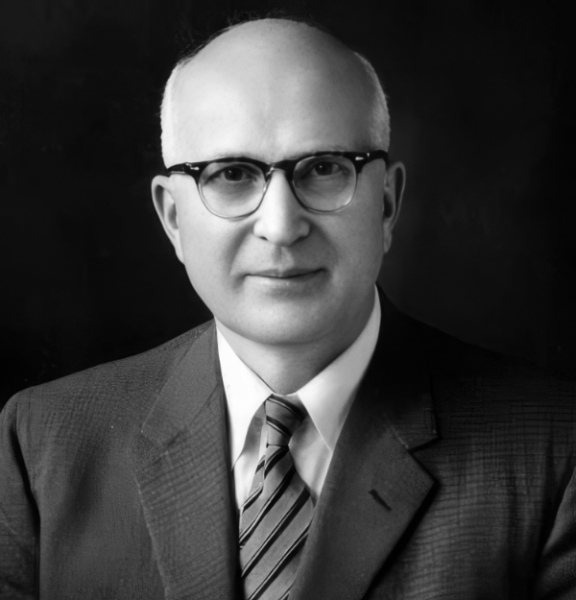
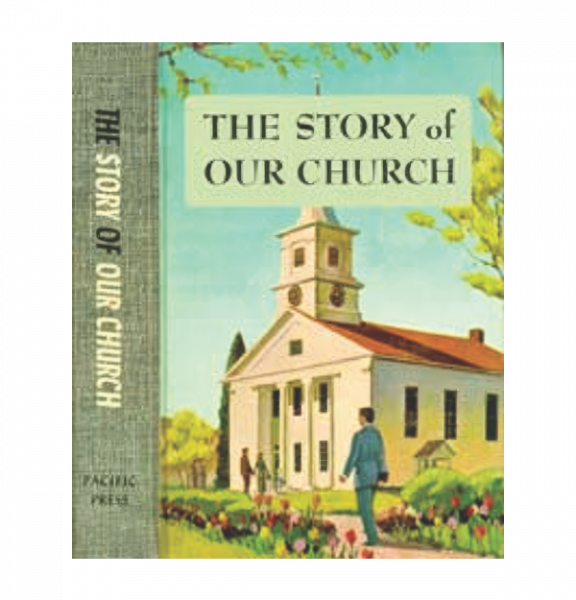
Mientras tanto, algunos escritores adventistas regresaron a las versiones anteriores y más dramáticas de la experiencia de Edson en el maizal compartidas por Cross y Spalding. En 1979, al escribir sobre los pioneros adventistas para inspirar a los lectores jóvenes, James Joiner relató que «una mano pareció caer sobre el ancho hombro [de Edson]... Y el cielo pareció abrirse ante él. Le pareció ver a Jesucristo... como el gran Sumo Sacerdote... Entonces, como si hubiera sido alcanzado por un rayo, el granjero comprendió».14 Dos años más tarde, la edición de 1981 de In the Footsteps of the Pioneers usó la palabra «revelación» en lugar de «visión».15 En 1993, George Knight colocó la palabra «visión» entre comillas, como reconociendo que, si bien ese era el punto de vista adventista tradicional, podría no haber coincidido con la realidad de la experiencia de Edson.16 Siete años después, sin embargo, Knight enfatizó que si bien Edson había sido uno de los «actores menores en el drama del Adviento» en comparación con Miller, Litch, Fitch, Himes y otros líderes antes del 22 de octubre, lo que le sucedió el 23 de octubre le dio más prominencia a los ojos de los adventistas que guardan el sábado.17
Al menos uno de los periódicos oficiales de la iglesia publicado en el extranjero empleó las palabras «visión, escena de asombro» en relación con la experiencia de Edson.18 Lo mismo hicieron los escritores de algunas publicaciones no oficiales e incluso de fuentes seculares críticas. Por ejemplo, Glen Greenwalt, escribiendo en la revista Spectrum en 1994, afirmó: «Creo que la experiencia de Edson fue verdaderamente visionaria. Porque Edson vio lo que muchos profetas han visto en su hora de prueba más profunda, a saber, una visión de que Jesús no los había abandonado, sino que ya entonces estaba obrando a favor de ellos en los atrios del cielo». Al comparar la visión de Edson con las de Daniel, Esteban, Pablo y Juan, Greenwalt concluyó que lo que sucedió en 1844 se asemejó a la Palabra de Dios en todas las épocas mientras Él busca maneras de morar con su pueblo.19 Del mismo modo, Laura Vance, en su libro altamente crítico Seventh-day Adventism in Crisis (1999), expresó la creencia de que Edson «vio en visión» el santuario celestial que debía ser purificado, y que a partir de esta visión «la escatología adventista contemporánea ha crecido».20
Las referencias a que Edson tuvo una visión o una revelación divina han aumentado en el siglo XXI, especialmente en las publicaciones adventistas dirigidas a los jóvenes y a los nuevos adventistas.

Las referencias a que Edson tuvo una visión o una revelación divina han aumentado en el siglo XXI, especialmente en las publicaciones adventistas dirigidas a los jóvenes y a los nuevos adventistas. Por ejemplo, en 2001, Youth Ministry Accent declaró que Edson había recibido «una revelación repentina», que convirtió la decepción de los adventistas en gozo cuando descubrieron a «un Dios de Justicia y Misericordia» que los amaba y cumplía las promesas que les había hecho».21 Tomando una página de Cross y Spalding, Norma Collins, en un libro de cuentos para niños, les informó que Edson «sintió como si una mano se posara sobre su hombro, deteniéndolo en seco... Vio lo que parecía ser una visión» de Jesús como Sumo Sacerdote, entrando al Lugar Santísimo en el santuario celestial para comenzar su obra de juicio.22
Los medios audiovisuales recientes también enfatizan la idea de que Edson tuvo una visión. En su CD de 2006, «Hiram Edson, God’s Man», William Fagal y Lewis y Richard Walton se refieren a su «visión».23 El actor no adventista contratado para interpretar el papel de Edson en el DVD de 2012 «Meet Hiram Edson» también siguió un guión que decía: «Vi el cielo» como en una visión.24 Del mismo modo, en su biografía de 2014 de John Harvey Kellogg, el historiador no adventista Brian Wilson se refirió a Edson como un «visionario» y a su «experiencia visionaria» en el maizal.25 Don Barton, en un artículo publicado en Spectrum llamando a la enseñanza del juicio investigador «la balsa salvavidas del adventismo», también declaró que Edson había recibido «una visión en un maizal».26

Edson recibió un destello de luz
Varios escritores, sin embargo, buscaron explicaciones alternativas para la experiencia de Edson en el maizal. La mayoría de ellos tenían algo que ver con la luz visible o con destellos de perspicacia. Ya en 1941, el presidente retirado de la Conferencia General, William Spicer, se refirió a «esa luz que entró en el alma de Hiram Edson... La luz era como un mensaje del cielo para su corazón y su mente».27 Escribiendo tres décadas después en Movement of Destiny (1971), Froom estuvo de acuerdo, llamando a la experiencia de Edson «un destello de luz divina».28 Un poco más dramáticamente, el pastor de la Nueva York Conference, Henry Uhl, afirmó en 1974 que Edson había sido «tocado por un destello de verdad como un relámpago con la doctrina del santuario».29 Más comedido en su retórica, Merlín Burt, en su guía de viajes Adventist Pioneer Places (2011), escribió que Hiram había recibido «una experiencia de iluminación», «un destello particularmente directo de perspicacia» y «una perspicacia que alentó su fe».30 Ejerceciendo una licencia más creativa, dijo Rachel Cabose dijo a los lectores de Guide en 2018: «De repente, una luz brilló alrededor de Hiram. ¡Parecía estar mirando directamente al cielo!» Entonces «oyó una voz que citaba Apocalipsis 11:19 [acerca de la puerta abierta al Lugar Santísimo y de la revelación del arca]».31
Hubo otros escritores, sin embargo, que se mostraron reacios a describir la experiencia de Edson como una visión o como un destello de luz visible. La mayoría de ellos creyeron que había recibido una impresión, mientras que unos pocos estaban convencidos de que nada sobrenatural sucedió en el maizal. El próximo mes, la Parte 4 discutirá esos dos grupos y concluirá esta serie compartiendo una palabra poco conocida que Edson probablemente habría usado para describir su experiencia.
_____________________________
Brian E. Strayer se jubiló después de 41 años de enseñanza y, además de escribir, es un orador frecuente en reuniones de campestres semanas de oración, conferencias e iglesias.
1 A.W. Spalding, «Light on the Sanctuary,» The Youth’s Instructor, March 8, 1910, pp. 4-6.
2 Viah O. Cross, «Recollections of the Message,» Review, April 1, 1920, pp. 22-23.
3 F.M. Bartle to W.A. Spicer, Sept. 4, 1935, in James R. Nix, «The Life and Work of Hiram Edson» (term paper for Church History 600—Problems in Church History, Seventh-day Adventist Theological Seminary, Andrews University, 1971), Appendix H, pp. 201-203.
4 A.W. Spalding, Footprints of the Pioneers (Washington, D.C.: Review and Herald Pub. Assn., 1947), p. 75.
5 A.W. Spalding to L.E. Froom, Aug. 25, 1949, Spalding Correspondence, Coll. 10, Box 2, Fld. 2, CAR, JWL, AU.
6 A.W. Spalding, Captains of the Host (Washington, DC: Review and Herald Pub. Assn., 1949), pp. 94, 97.
7 A.W. Spalding, «A Western Ally,» Review, Jan. 19, 1950, p. 11. Es probable que Spalding tuviera a mano el manuscrito anterior de Viah Cross sobre la experiencia de su padre cuando escribió su artículo, y esto podría explicar su similitud en la redacción.
8 Le Roy E. Froom, «How the Full Light on the Sanctuary Came to Us,» Review, Sept. 9, 1948, p. 8.
9 General Conference Department of Education, The Story of Our Church (Mountain View, CA: Pacific Press Pub. Assn., 1956), p. 177.
10 Jerome Clark, 1844, 3 vols. (Nashville, TN: Southern Pub. Assn., 1968), vol. 1, p. 67.
11 Edwin S. Gaustad, ed., The Rise of Adventism (New York: Harper and Row, 1974), p. 178.
12 Ronald L. Numbers, Prophetess of Health (New York: Harper and Row, 1976), p. 13.
13 Malcolm Bull and Keith Lockhart, Seeking a Sanctuary (New York: Harper and Row, 1989), p. 75.
14 James Joiner, «These Were the Courageous: Hiram Edson,» Guide, Oct. 24, 1979, p. 20.
15 In the Footsteps of the Pioneers (Washington, DC: Ellen G. White Estate, 1981), p. 21.
16 George Knight, Anticipating the Advent (Boise, ID: Pacific Press Pub. Assn., 1993), p. 22.
17 George Knight, A Search for Identity (Hagerstown, MD: Review and Herald Pub. Assn., 2000), pp. 62-64.
18 «Hiram Edson,» Southern Asia Tidings, Oct. 1994, p. 11.
19 Glen Greenwalt, «The Sanctuary: God in Our Midst,» Spectrum 24, no. 2 (Oct. 1994), pp. 42-49.
20 Laura Vance, Seventh-day Adventism in Crisis (Urbana and Chicago: University of Illinois Press, 1999), pp. 26-27.
21 «Inspired by Our Theology,» Youth Ministry Accent, April-June 2001, pp. 43-44.
22 Norma Collins, Heartwarming Stories of Adventist Pioneers (Hagerstown, MD: Review and Herald Pub. Assn., 2005), Book 1, p. 35.
23 William Fagal, Lewis Walton, and Richard Walton, «What Hath God Wrought? Hiram Edson, God’s Man» (Harrisburg, PA: American Cassette Ministries, 2006).
24 «Meet Hiram Edson» DVD (Silver Spring, MD: Adventist Heritage Ministry, 2012).
25 Brian C. Wilson, Dr. John Harvey Kellogg and the Religion of Biologic Living (Bloomington, IN: Indiana University Press, 2014), pp. 7, 22.
26 Don Barton, «The Investigative Judgment: Adventism’s Life Raft,» Spectrum 41, no. 3 (Summer 2013), p. 17.
27 William A. Spicer, Pioneer Days of the Advent Movement (Washington, DC: Review and Herald Pub. Assn., 1941), p. 221.
28 Le Roy E. Froom, Movement of Destiny (Washington, DC: Review and Herald Pub. Assn., 1971), p. 78 (see footnote).
29 Henry Uhl, «Church and State—a Dual Celebration,» Atlantic Union Gleaner, Aug. 27, 1974, p. 3.
30 Merlin D. Burt, Adventist Pioneer Places: New York & New England (Hagerstown, MD: Review and Herald Pub. Assn., 2011), pp. 130, 133.
31 Rachel Whitaker Cabose, «Light in a Cornfield,» Guide, Oct. 13, 2018, p. 18.






